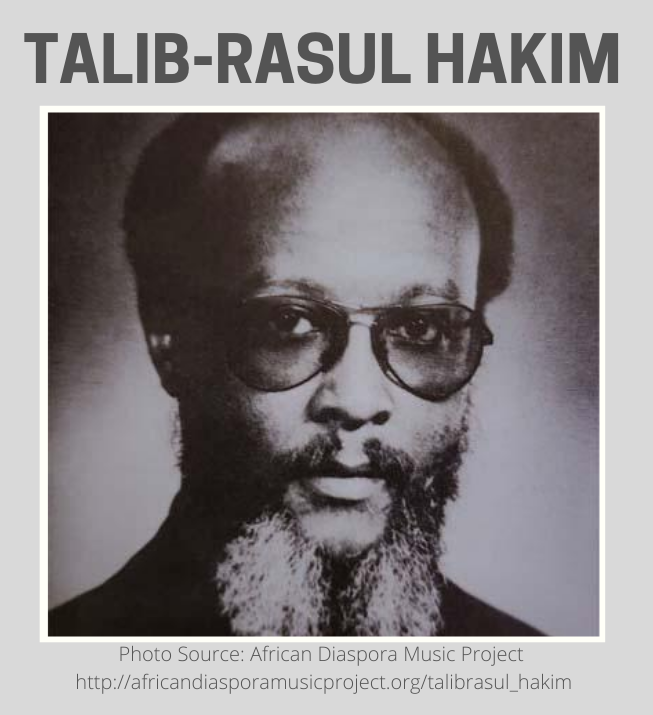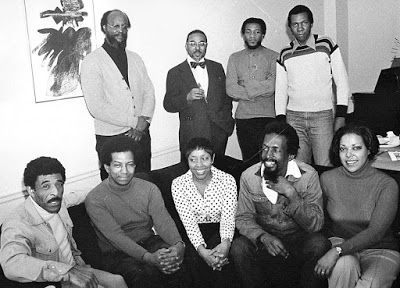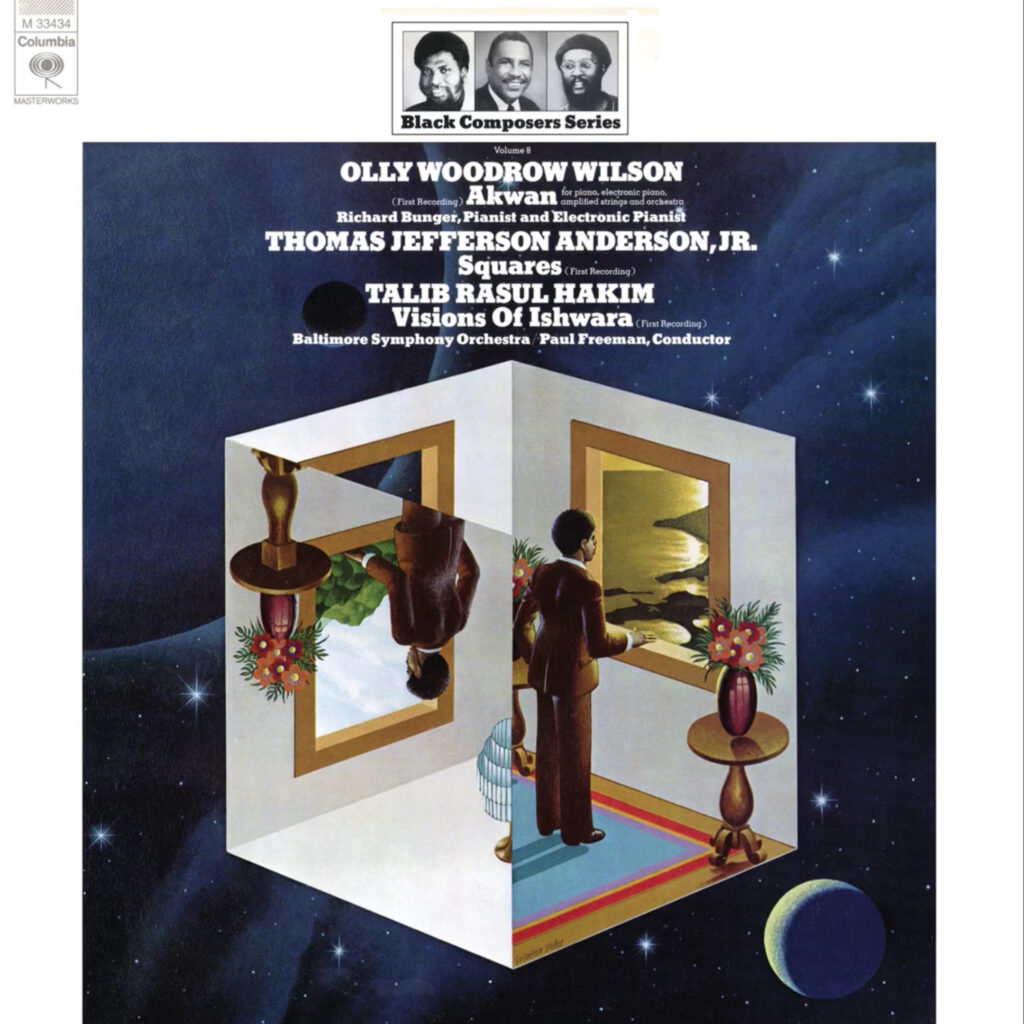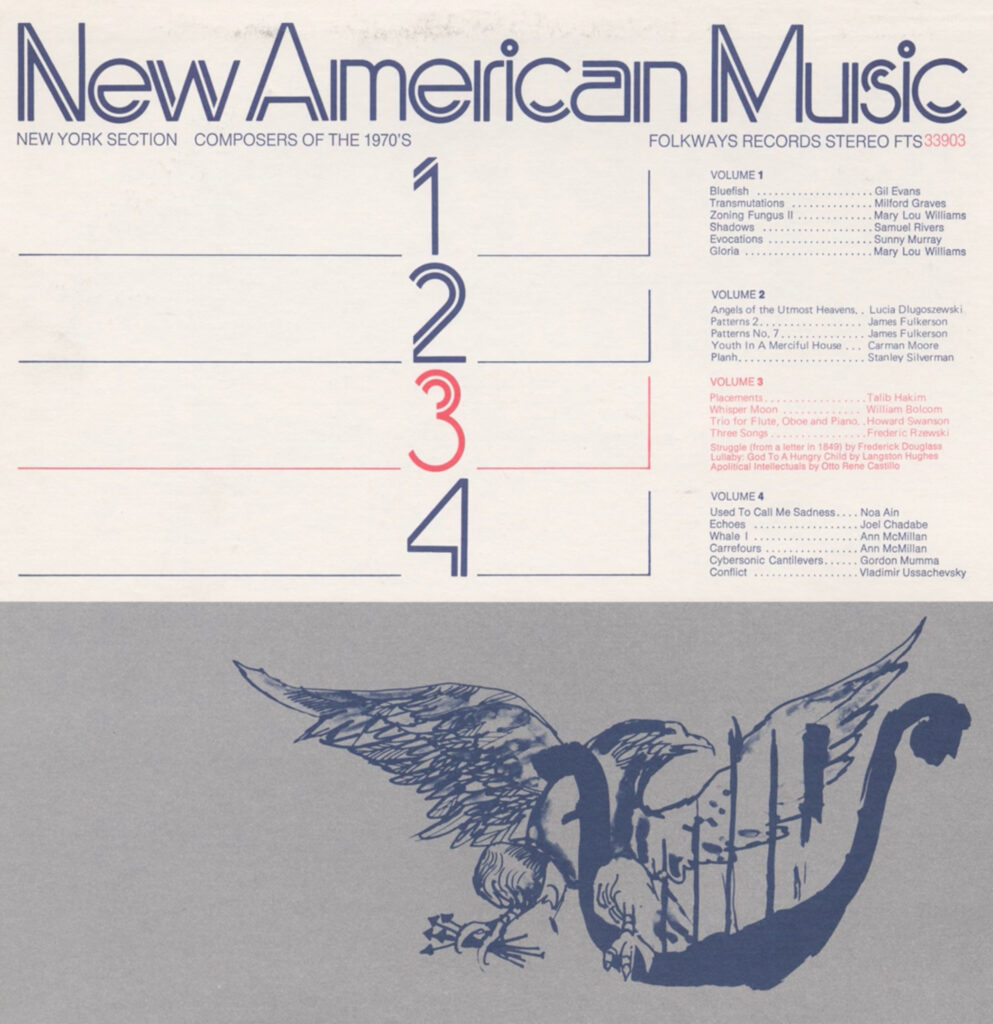
Today’s Spotlight is on the American composer and poet Talib Rasul Hakim (1940 -1988). Hailed as “a composer of great originality,” possessing a “unique ability to evoke philosophic contemplation from the attentive listener,” [i] Talib Rasul Hakim considered the creative process to be a “religious act” where technique and craftsmanship serve as vehicles for expression of one’s spirituality. [ii]
Born in Asheville, North Carolina on February 8, 1940 as Stephen Alexander Chambers, Hakim pursued musical studies at the Manhattan School of Music (1958–9), the New York College of Music (1959–63) and the New School for Social Research in New York (1963–5).[iii] His teachers included Robert Starer, William Sydeman, Hall Overton, Morton Feldman, and Chou Wen-Chung.[iv]
When asked what persons, events, or artistic works influenced him musically or otherwise, he began by crediting his mother for setting him onto the musical path. He then listed: (1) the study of European classics such as Beethoven, Mozart, Brahms and Debussy who continued to help him “develop toward a musical sense;” (2) Margaret Bonds, who he said was “the first living touchable black composer” to help him “tune into a sense of spirituality about music;” (3) meeting Ornette Coleman and Eric Dolphy in NYC in the 60s; (4) his close friendship with Hale Smith; (5) the music of Miles Davis and John Coltrane, and (6) readings in Eastern religions, philosophy and astrology. [v] In 1973, he converted to Sufism and adopted his new name. [vi]
Hakim received three ASCAP Composers Awards, four Bennington Composers’ Conference Fellowships, as well as awards from Connecticut Commission on the Arts, Creative Artists Public Service Program (CAPS), and the National Endowment for the Arts. [vii, viii]
He taught at Pace College, Adelphi University, Nassau Community College, and Morgan State University; coordinated the Brooklyn Philharmonic Community Concert Series; and was the co-founder and president of the Society of Black Composers. [ix, x]
He described his compositional style as “one of motivic, intervallic, fixed, free-form composition.” [xi]
Today we’d like to share three of his works:
Sound-Gone for solo piano, subtitled “a poetic-philosophical sketch” was written in 1967. The piece was extensively performed by Natalie Hinderas, whose recording you can listen to here. The following verses where included in the liner notes to her LP release of 1970:
Atmospheres-of-sound floating above
And around segments of
“Moving silence”
A burst of thunder here–another
Moment of silence
(now gone)
A jaunty-precision-like figure in rapid
Motion for a brief sketch
(now gone)
A veil-like aura-of-sound,
Mystifying in its layers
of introspective freedom
(now gone)
A “sound-gone” now commences
to move (from)
and them (towards) a
space-entity of other
Beings!!
(now gone is the Sound) [xii]
Hakim felt that with Sound-Gone, he found a way of using musical materials, such as clusters and multi-rhythmic elements, that expressed his religious-philosophical concepts. [xiii] He continued to explore this path in his later compositions, including “Visions of Ishwara” for orchestra which we invite you to listen to next, in a recording by Baltimore Symphony Orchestra conducted by Paul Freeman. [xiv]
Written in 1970, the piece was deemed by critics a “masterpiece” that “merits frequent hearings” [xi]. Hakim described it within his output as “a kind of culumnation of instrumental pieces reflecting an inner spirituality.” [xv]
Percussion and percussiveness are central to Hakim’s music. He explains: “My music is percussive; it is repetitious and it tends sometimes to be incantatory…even when I’m using brass or so-called non-percussive instruments, I use these instruments in a percussive manner…There is an inner pulse that permeates most of my work and this inner pulse reflects my awareness of the same kind of inner pulse that is predominant in most non-European forms of music.” [xvi]
His large body of chamber music is distinct in its use of unusual combinations of instruments that often include percussion. Placements, for 5 percussionists and piano written in 1970 is one such example. The work is scored for six timpani, a large wood block, xylophone, marimba, three gongs, bass drum, two tom-toms, a set of glass bamboo hand chimes, a tubular bell, three triangles, three cymbals, sleigh bells, and piano. The piece consists of 4 sections, which are not formally separated into movements. In two brief areas of the work, the pianist is instructed to improvise. [xvii]
The following is a recording by percussionists Joe Chambers, Omar Clay, Warren Smith, Barbara Burton, and Wilson Moorman and pianist Stanley Cowell, conducted by the composer himself. [xviii]
When asked whether he encountered difficulties in getting his works programmed, Hakim answered: “I don’t have difficulty getting works programmed, primarily because I haven’t pushed to get works programmed. I’m not into pushing.” [xix] This may be one of the reasons why to this date only a tiny fraction of his outstanding and extensive compositional output has been professionally recorded or performed, leaving a wealth of works waiting to be rediscovered by curious ensembles and soloists!








